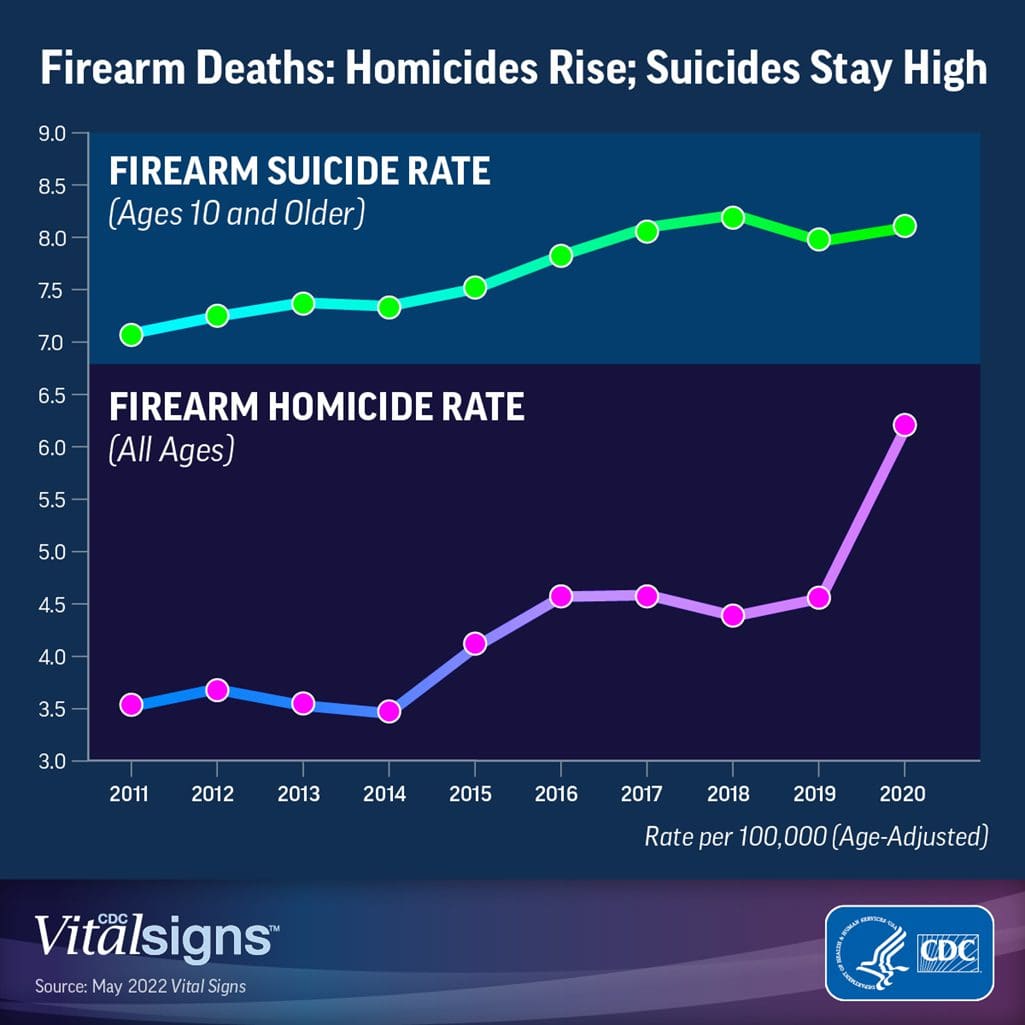
Originally written & posted by Centers for Disease Control and Prevention (CDC)
Firearms were involved in 79% of all homicides and 53% of all suicides in 2020. Against the backdrop of the COVID-19 pandemic, there has been a historic increase of 35% in the firearm homicide rate, resulting in the highest firearm homicide rate in more than 25 years. This, along with increases in firearm suicide rates for some groups, has widened racial, ethnic, and other disparities, according to a new CDC Vital Signs analysis.
Firearm homicide rates are consistently highest among males, adolescents, young adults, and non-Hispanic Black and non-Hispanic American Indian and Alaska Native (AI/AN) people. In 2020, firearm homicide rates increased across all age groups, with the highest rates and increases observed among those 10-44 years old. Considering age, sex, and race/ethnicity simultaneously, the largest increases in firearm homicide rates were among non-Hispanic Black males 10-44 years old.
The overall firearm suicide rate remained nearly level between 2019 and 2020, with age-specific rate increases among persons 10-44 years old, partially offset by a decrease among those 45-64 years old. Considering age, sex, and race/ethnicity simultaneously, rates of firearm suicide increased most notably among non-Hispanic AI/AN males aged 10-44.
Long-standing systemic inequities and structural racism may contribute to unfair and avoidable health disparities among some racial and ethnic groups.
“The tragic and historic increase in firearm homicide and the persistently high rates of firearm suicide underscore the urgent need for action to reduce firearm-related injuries and deaths,” said CDC Director Rochelle Walensky, MD, MPH. “By addressing factors contributing to homicide and suicide and providing support to communities, we can help stop violence now and in the future.”

A comprehensive approach is needed to help reduce firearm-related deaths. Strategies that focus on underlying conditions can reduce disparities and the risk for violence while also strengthening protective factors at the individual, family, and community levels. Some actions can have a more immediate impact on preventing violence, and others can be long-term solutions.
Working with partners, including policymakers; local, state, territorial, and tribal governments; health, education, justice, and social service agencies; and businesses and community organizations can help ensure that local needs are met.
“Firearm deaths are preventable—not inevitable—and everyone has a role to play in prevention,” said Debra Houry, MD, MPH, CDC acting principal deputy director and director, CDC’s National Center for Injury Prevention and Control. “Resources like CDC’s violence prevention technical packages and surveillance systems can give leaders tools to lay the foundation for healthier and safer communities.”
The National Suicide Prevention Lifeline provides free and confidential emotional support to people in suicidal crisis or emotional distress 24 hours a day, 7 days a week, across the United States. The Lifeline comprises a national network of over 200 local crisis centers, combining custom local care and resources with national standards and best practices.
For more information about this report, visit: cdc.gov/vitalsigns.